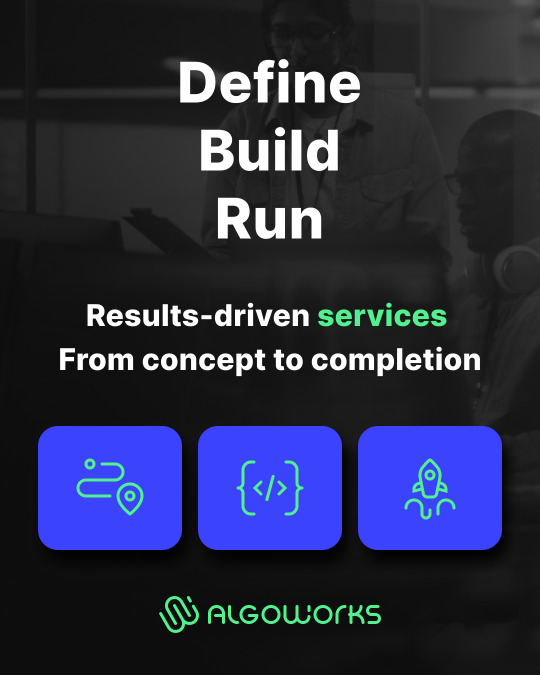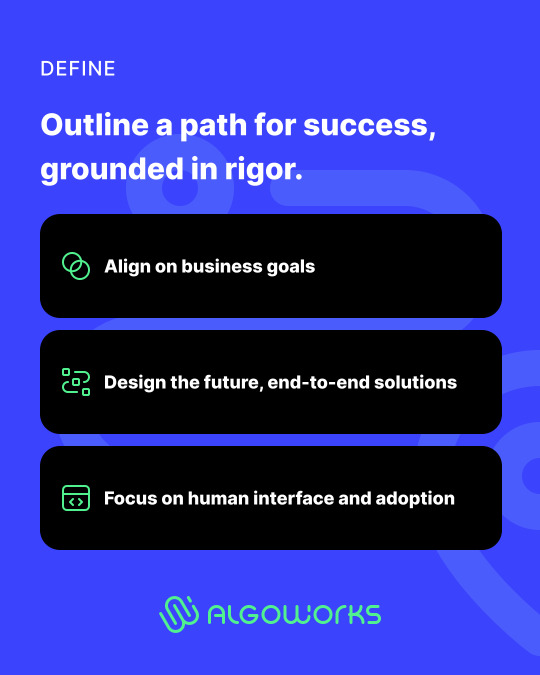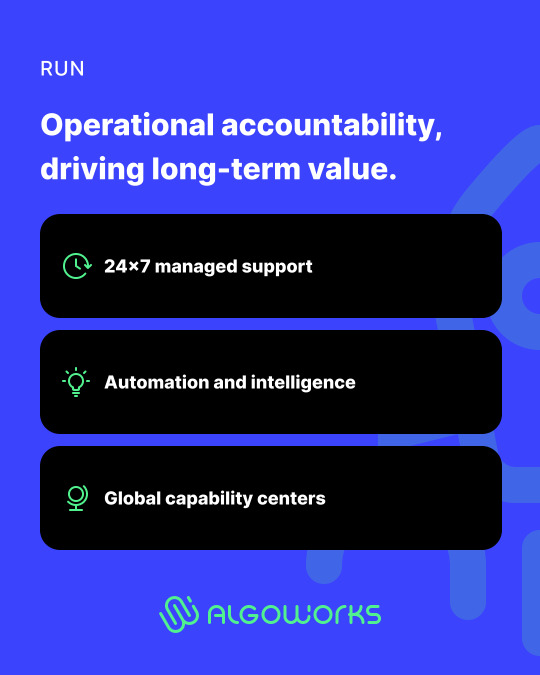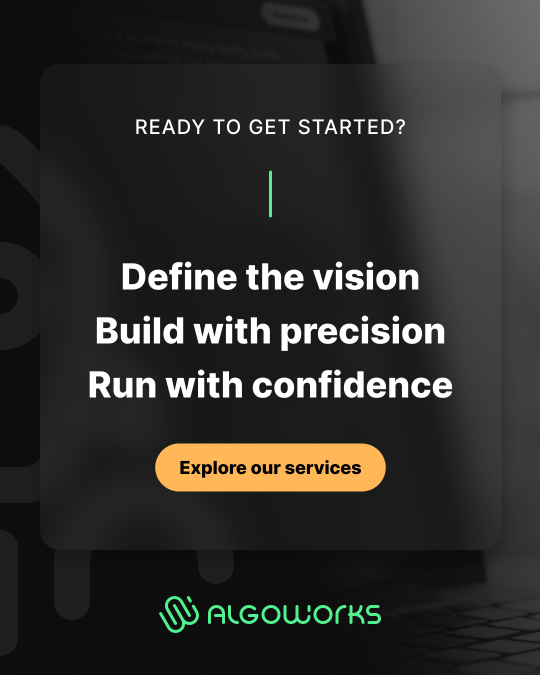#agile development services
Explore tagged Tumblr posts
Text
Gamification in Agile: Boosting Engagement and Productivity
Agile methodologies have revolutionized how teams plan, develop, and release products. By breaking projects into manageable sprints and fostering a culture of continual feedback, Agile enables faster turnarounds and more responsive processes. However, there’s an emerging trend that goes a step further to energize teams and spur productivity: gamification. This article explores how integrating gamified principles into Agile workflows can elevate team engagement, improve transparency, and deliver more impactful outcomes.
1. What is Gamification?
Gamification applies game-like elements — such as points, badges, and leaderboards — to non-gaming environments. The goal is to make tasks more engaging by tapping into people’s innate desire for achievement, competition, and recognition. In a work setting, these elements can foster a sense of camaraderie and achievement, encouraging individuals to stay motivated even when faced with repetitive or challenging tasks.
When fused with Agile methodologies, gamification helps team members track progress more visibly, celebrate wins, and sustain momentum. Sprints, user stories, and stand-up meetings become not just essential touchpoints but opportunities for healthy competition and collective achievement.
2. Why Mix Gamification with Agile?
Enhanced Motivation
Agile often thrives on regular feedback loops, frequent check-ins, and milestones. Adding gamification creates tangible incentives — like badges for completing a sprint on time or points for successfully resolving bugs. Such visible achievements can reinvigorate teams, making them eager to collaborate and push each other to meet goals.
Increased Transparency
Agile promotes transparency through backlog visibility and daily stand-ups. Gamification amplifies this by presenting real-time dashboards that show progress toward a common objective. By recognizing both individual contributions and team-wide accomplishments, stakeholders gain clear insight into performance metrics, bottlenecks, and successes.
Accelerated Learning
Continuous improvement is a core Agile value. Gamification supports this by providing immediate feedback — such as leveling up when a specific skill is mastered or a sprint is completed efficiently. Over time, this instant gratification can nurture a culture of rapid learning and curiosity, prompting team members to explore new tools or techniques.
3. Practical Ways to Gamify Agile
Sprint Challenges
Design sprint-specific challenges that reward speed, quality, or innovation. For instance, awarding points to a team that resolves the highest number of user stories within scope can spark friendly competition.
Task Boards with Levels
Instead of a standard Kanban board, implement levels or tiers. Moving tasks from one column to the next could unlock new “levels,” motivating participants to clear their queues.
Achievement Badges
Award badges for significant milestones, like delivering a feature under budget or squashing a high-priority bug before a deadline. Display these recognitions publicly in the team’s workspace.
Leaderboards
Show real-time progress of each team member or sub-team. While some worry leaderboards can cause internal rivalries, balanced design can boost camaraderie and keep individuals accountable.
4. Aligning Gamification with Agile Principles
It’s important to ensure gamification complements rather than overshadows Agile values. Here’s how to keep it authentic:
Focus on Collaboration Over Competition
Healthy rivalry can motivate, but Agile teams function best when synergy is at the heart of their work. Ensure any competition fosters group cohesion instead of individual silos.
Embrace Feedback
Agile relies on iterative feedback. Gamified features should be subject to the same process, adapting to user responses and making incremental improvements along the way.
Balance Rewards
Ensure that achievements recognize not just speed but also quality, teamwork, and continuous learning. Overemphasizing one metric — like the number of tickets closed — could inadvertently compromise product excellence.
Keep It Voluntary
While gamification can energize participants, forcing everyone into the system might lead to resentment or “gaming” the system. Provide clear benefits but allow team members some autonomy in how they engage.
5. Tooling and Platforms
Several project management and collaboration tools now include gamification plugins or built-in features. These range from point-based systems to more elaborate “level-up” journeys. Teams looking to implement gamification can also custom-build solutions:
Open-Source Plugins: Extensions for popular tools like Jira or Trello may offer points, badges, or other game elements.
Custom Solutions: Larger organizations sometimes integrate gamification directly into their internal dashboards, aligning game-based incentives with key performance indicators.
Third-Party Services: Dedicated platforms exist solely to gamify project tasks and performance metrics. This route often includes analytics for deeper insights into team behavior.
6. Role of Specialized Agile Services
Organizations new to gamification often benefit from external guidance to ensure seamless integration into existing processes. Experienced agile development services can help:
Map out sprint structures and identify the most impactful places to insert game elements.
Offer training and support for teams adapting to fresh motivators.
Provide insights on best practices, avoiding pitfalls like reward inflation or toxic competition.
Additionally, these services stay updated on the latest agile development technology, enabling them to recommend or build tools that align with organizational culture and business objectives.
7. Measuring Success
To gauge the impact of gamified Agile workflows:
Engagement Levels
Look at metrics like sprint attendance, number of tasks completed, and code commits to see if participation has risen.
Quality Metrics
Track bug rates or customer satisfaction over several sprints. If these indicators improve, it suggests gamification is driving not just output but also better outcomes.
Team Morale
Conduct regular surveys or one-on-one feedback sessions to see if team members feel more energized and supported.
Retention and Turnover
If your team is more engaged, turnover rates may decrease. A sense of achievement and belonging often keeps people around longer.
Integrating gamification into Agile methodologies can breathe new life into your development sprints, turning routine tasks into rewarding challenges. By blending team spirit with personal achievement, gamification fosters a more engaged, transparent, and productive environment. Whether you tap into agile development services for planning or deploy specialized agile development technology for tracking progress, the key is to start small, gather feedback, and iterate. When done right, gamification doesn’t just produce short-term excitement — it instills long-lasting motivation that continually fuels Agile success.
0 notes
Text
Explores Agile software development, its benefits, frameworks, and strategies for successful implementation. Learn how Agile improves flexibility, collaboration, and efficiency while reducing costs. Discover key Agile metrics, scaling techniques, and best practices for managing distributed teams. Gain insights into Agile adoption through case studies from industry leaders like Spotify and Cisco.
#AgileSoftwareDevelopment#Agile Software Development#AgileSoftware#Agile Software Development Company#Agile Software Development Services#Agile Development Services
0 notes
Text

Algoson Software is a leading machine learning and AI Product Development Company based in Mohali, India. Our team of seasoned software and AI developers is dedicated to empowering your business with cutting-edge AI solutions. By leveraging machine learning and data engineering, we transform your data into a strategic asset. Connect with us to elevate your business with Algoson’s advanced AI services. For exceptional software solutions, reach out to us at [email protected].
#leading software development company#customized software product#software development company#custom software development#software development company near me#startup software development#viewJs#reactjs#java#software developers near me#Algoson software services in Switzerland#best software development company websites#website development company#agile development services#certified java developer
0 notes
Text
#truefirms#agile development#dedicated team#choose dedicated team for agile development#agile development services
1 note
·
View note
Text





We follow our Define, Build, Run framework to execute flawlessly. From deep listening and 360° planning, to building with agile development and clean code, we ensure performance, security and return on investment through 24/7 monitoring and SLA-backed delivery.
Visit our website to learn more! https://www.algoworks.com/services/
#digital transformation#agile development#clean code#software engineering#cyber security#enterprise solutions#tech innovation#cloud services#innovations#technology#leadership#business excellence
1 note
·
View note
Text
Agile Software Development Company: Empowering Businesses with Agile Software Development Services
In today’s fast-paced digital era, an Agile Software Development Company plays a crucial role in delivering high-quality, adaptive, and efficient software solutions. Businesses seeking speed, flexibility, and collaboration are turning to Agile Software Development services to accelerate their product development and stay ahead of market demands.
A leading Agile Software Development Company focuses on iterative development, continuous feedback, and close client collaboration. This approach minimizes risks, enhances product quality, and ensures that the final solution aligns with business goals. From startups to large enterprises, Agile Software Development services offer a dynamic framework that supports quick adjustments, real-time updates, and efficient resource utilization.
Key offerings of a top Agile Software Development Company include sprint planning, Scrum management, continuous integration, and test-driven development. These Agile Software Development services help companies reduce time to market, adapt to changing requirements, and deliver customer-centric software.
Choosing an experienced Agile Software Development Company ensures streamlined workflows, enhanced team productivity, and robust digital solutions. With Agile Software Development services, businesses can innovate faster, scale smarter, and achieve sustainable growth in a competitive landscape.
0 notes
Text
AI Consultant in UK: Transforming SMEs with Smart Technologies

AI's impact is beginning to reach SMEs in other parts of the UK. An AI consultant in UK is not limited to use by big technology companies; blog SMEs are adopting these applications and thus, are able to grow smarter, faster and cheaper.
How UK AI Consultants Help SMEs
1. Automating Repetitive Tasks
AI tools such as:
Customer service chatbots
Invoice processing systems
Inventory control systems
Tracking systems
2. Enhancing Marketing with AI
The use of:
Predictive analytics for customer behavior
Intelligent segmentation in email marketing
Automated content generation procedures
is made possible by UK consultants.
3. Improving Decision-Making
Real time analytics is provided by AI Tools.
Consultants put together dashboards displaying KPIs and market trends.
4. Optimizing Operations
AI consultants help in scheduling and managing logistics by:
Assessing and diagnosing operational efficiency gaps.
Providing automation and optimization tools.
Success Stories
One retail SME based in London integrated AI systems and AI recommendations resulted in a 30% increase in sales.
A Birmingham-based logistics firm made use of AI routing tools, which allowed them to cut delivery holdups by 40%.
Conclusion
Even small businesses can benefit from AI. An AI consultant in UK is capable of equipping small and medium-sized enterprises with smart tech that improves productivity, provides business intelligence, and aids in cost reduction—all within financial reach.
#artificial intelligence services#artificial intelligence companies#ai solutions companies#hybrid application development company#hybrid app development company#agile software development consulting
0 notes
Text
Transforming Businesses with Enterprise Digital Transformation, IT Consulting, and Agile Development

As technology continues to reshape industries, businesses must prioritize enterprise digital transformation and IT consulting to remain competitive. A key enabler of this transformation is agile custom software development services, which allow organizations to build customized, efficient, and scalable solutions.
This article explores how digital transformation, IT consulting, and agile development work together to empower businesses for future success.
The Role of Enterprise Digital Transformation in Business Growth
Enterprise digital transformation enables businesses to:
Streamline operations for increased efficiency.
Improve customer satisfaction through digital engagement strategies.
Leverage AI and cloud computing for data-driven insights and automation.
How IT Consulting Facilitates Digital Transformation
IT consultants play a vital role in guiding businesses through digital transformation by:
Assessing current technology landscapes to identify gaps and opportunities.
Providing expert recommendations for software development and IT infrastructure.
Ensuring seamless technology integration with existing business processes.
The Impact of Agile Custom Software Development Services
Agile software development enhances digital transformation efforts by:
Enabling continuous improvement through incremental updates.
Ensuring faster deployment of business-critical applications.
Encouraging collaboration between development teams and stakeholders.
Conclusion
By embracing enterprise digital transformation and IT consulting, businesses can unlock new growth opportunities. Combined with agile custom software development services, organizations can stay ahead of market trends, enhance operational efficiency, and build future-ready digital solutions.
1 note
·
View note
Text
Embracing Agile: How Flexible Development Fuels Innovation
The ability to adapt quickly and efficiently is crucial for survival. This is especially true in the software development world, where speed and agility can make the difference between meeting deadlines or falling behind. That’s where agile development services come into play. By embracing a flexible approach, businesses can more effectively navigate changing requirements, deliver high-quality products, and maintain a competitive edge. This article will explore the fundamentals of agile methodology, highlight its benefits, and discuss the role of agile development technology in driving success.
1. What is Agile?
Agile is a project management and software development methodology that emphasizes flexibility, iterative progress, and collaboration. Instead of planning every detail upfront, Agile teams work in short “sprints” and regularly reassess their priorities. This allows them to respond quickly to new information, customer feedback, or shifting market conditions.
By breaking projects down into smaller, manageable tasks, team members maintain clear focus on immediate objectives. With frequent checkpoints, developers can address any issues quickly, minimizing risk and ensuring the product evolves in line with user needs.
2. Core Principles of Agile
Customer Collaboration
Agile prioritizes engaging customers or stakeholders throughout the development cycle. Regular feedback loops prevent major misunderstandings and help teams deliver solutions that truly meet end-user requirements.
Adaptive Planning
Rather than committing to a rigid plan at the outset, Agile teams continuously refine their scope based on new insights. The result is a flexible roadmap that can pivot efficiently as needs evolve.
Short Iterations
Work is organized into sprints — usually lasting two to four weeks — allowing developers to focus on specific features. At the end of each sprint, teams assess progress, solicit feedback, and plan subsequent steps.
Cross-Functional Teams
Agile emphasizes collaboration across various expertise areas — such as development, design, and testing — to promote synergy and streamline workflows. Having all necessary skills in one team speeds up decision-making and implementation.
Continuous Improvement
After each sprint, teams engage in retrospectives to identify what worked well and what could be improved. This iterative mindset fosters ongoing growth and adaptability.
3. Benefits of Agile
Faster Delivery
Because work is split into smaller chunks with short timelines, teams can release features or updates more quickly. This approach also reduces the time from idea to market, enabling businesses to stay competitive and adapt to consumer demands.
Enhanced Quality
Regular testing and quality checks at the end of each sprint help spot defects early. This preemptive problem-solving saves teams from massive rework and ensures a better overall product.
Improved Stakeholder Alignment
Frequent demonstrations and open communication keep stakeholders aligned with the project’s direction. This transparency mitigates the risk of large-scale revisions late in the process and ensures that the final product meets everyone’s expectations.
Greater Employee Engagement
Agile fosters an environment of shared ownership and mutual respect. Team members feel valued when their input is acknowledged and integrated, often resulting in increased motivation and job satisfaction.
4. Roles in an Agile Team
Product Owner: Represents the stakeholders, sets project vision, and manages the product backlog (list of tasks and features).
Scrum Master: Facilitates team processes, removes obstacles, and ensures adherence to Agile principles.
Development Team: Typically comprises developers, designers, and testers responsible for building the product within each sprint.
These roles may vary depending on the framework or project size, but the core principle remains the same: clear communication and collective responsibility.
5. Choosing the Right Framework
Several Agile frameworks have gained popularity over the years, each with its own focus areas:
Scrum: Ideal for teams working on complex projects that benefit from frequent reassessment.
Kanban: Offers a visual board to track tasks, limiting work in progress to maintain smooth flow.
Lean: Focuses on eliminating waste and optimizing resources.
Extreme Programming (XP): Emphasizes high-quality software via frequent releases and pair programming.
The choice often depends on project requirements, team size, and organizational culture. However, many teams combine elements from different frameworks to create a hybrid approach tailored to their unique needs.
6. The Role of Agile Development Services
Partnering with professionals who specialize in agile development services can accelerate your project’s success. These experts offer:
Customized Strategies
Every business has distinct goals and challenges. Seasoned Agile practitioners develop tailored roadmaps that align with your specific objectives, ensuring no wasted effort.
Training and Coaching
Shifting to Agile can be daunting for teams used to traditional methodologies. External specialists often provide training sessions and hands-on guidance to ease the transition and encourage cultural buy-in.
Best Practices
Experienced Agile consultants bring a wealth of knowledge from working on multiple projects. They can recommend industry-standard tools, testing frameworks, and documentation methods that keep teams on track.
Scalability
As your project grows, an Agile services partner can help you scale processes, coordinate multiple teams, and maintain quality control across various product lines.
7. Harnessing Agile Development Technology
While methodology and team culture are critical, technology also plays a pivotal role in implementing and sustaining Agile practices. Agile development technology includes:
Project Management Tools: Platforms like Jira, Trello, or Asana facilitate sprint planning, backlog prioritization, and real-time tracking.
Continuous Integration/Continuous Deployment (CI/CD) Pipelines: Tools like Jenkins or GitLab CI/CD automate code integration and testing, ensuring rapid feedback and smoother releases.
Version Control Systems: Git-based platforms (e.g., GitHub, Bitbucket) allow multiple team members to work on the same codebase without stepping on each other’s toes.
Collaboration Suites: Messaging platforms like Slack or Microsoft Teams offer instant communication channels, quick decision-making, and file-sharing options.
By combining the right tools with well-orchestrated processes, businesses can optimize their workflows and reduce turnaround times.
8. Overcoming Common Challenges
Despite its advantages, adopting Agile can present challenges:
Cultural Resistance: Long-standing hierarchies may hesitate to embrace flat team structures or open collaboration. Strong leadership and clear communication are vital to easing this transition.
Scope Creep: Frequent iteration cycles risk expanding requirements if stakeholders keep adding features. Maintaining a well-defined product backlog and adhering to sprint goals can help.
Poor Estimation: Agile doesn’t eliminate estimation hurdles. Teams must refine their processes — like velocity tracking — to minimize delays and meet realistic deadlines.
Distributed Teams: Agile thrives on face-to-face interaction. Organizations working with remote members or freelancers need robust communication tools and synchronized workflows to remain effective.
As competition continues to intensify, companies that fail to innovate or adapt risk losing relevance. Agile provides a framework for staying nimble, cultivating teamwork, and consistently delivering value — all of which can spell long-term prosperity in today’s dynamic marketplace.
0 notes
Text
Explore the world of Agile Software Development in this episode. Discover how Agile Software Development Services enhance collaboration and adaptability, empowering teams to deliver quality products swiftly. Learn how Impressico Business Solutions supports your Agile journey for improved efficiency and innovation in today’s fast-paced software landscape.
#Agile Software Development#Agile Software Development Company#Agile Software Development Services#Agile Development Services#Agile DevOps Tools
0 notes
Text
Best Practices in Software Development: Writing Clean and Efficient Code
Introduction
In today's technology-driven world, software development is pivotal for businesses and individuals aiming to innovate and streamline operations. It encompasses the entire process of designing, coding, testing, and maintaining software applications to meet specific needs. Whether you're a startup, a large corporation, or an individual entrepreneur, investing in software development ensures efficient processes and a competitive edge.
Types of Software Development
Front-End Development
Focuses on the user interface and experience, utilizing technologies like HTML, CSS, and JavaScript to create interactive and visually appealing applications.
Back-End Development
Manages server-side logic, databases, and application integration, ensuring that the software functions correctly behind the scenes.
Full-Stack Development
Combines both front-end and back-end development skills, enabling developers to build comprehensive applications from start to finish.
Mobile Application Development
Involves creating applications specifically designed for mobile devices, using platforms like iOS and Android.
Embedded Systems Development
Focuses on developing software for specialized hardware systems, such as automotive controls or medical devices.
Key Technologies in Software Development
Programming Languages: JavaScript, Python, Java, C#, and C++ are among the most commonly used languages.
Frameworks and Libraries: React, Angular, Django, and .NET aid in building robust applications efficiently.
Databases: Systems like MySQL, PostgreSQL, and MongoDB are used to store and manage data effectively.
Version Control Systems: Tools like Git help in tracking changes and collaborating on codebases.
Benefits of Professional Software Development Services
Customized Solutions: Tailored software meets specific business requirements, enhancing efficiency.
Scalability: Professionally developed software can grow with your business needs.
Security: Implementing best practices ensures data protection and minimizes vulnerabilities.
Maintenance and Support: Ongoing support ensures the software remains up-to-date and functional.
How to Choose the Right Software Development Service Provider
Experience and Expertise: Look for providers with a proven track record in your industry.
Portfolio and Case Studies: Review past projects to assess quality and relevance.
Client Testimonials: Positive feedback indicates reliability and satisfaction.
Communication and Collaboration: Ensure they have a transparent process and are open to feedback.
Common Challenges in Software Development
Requirement Changes: Evolving needs can lead to scope creep if not managed properly.
Technical Debt: Compromises in code quality for quick delivery can cause future issues.
Integration Issues: Ensuring new software works seamlessly with existing systems.
Resource Constraints: Limited time, budget, or skilled personnel can impact project success.
Future Trends in Software Development
Artificial Intelligence and Machine Learning: Integrating AI to create smarter applications.
Cloud Computing: Leveraging cloud platforms for scalable and flexible solutions.
DevOps Practices: Combining development and operations for faster delivery cycles.
Internet of Things (IoT): Developing software for interconnected devices.
Conclusion
Investing in professional software development is crucial for organizations aiming to stay competitive and efficient in the modern landscape. By leveraging the right technologies and expertise, businesses can create solutions that drive success and innovation.
FAQs
What is the average cost of software development services?
Costs vary widely based on project complexity, scope, and location of the development team. It's best to obtain quotes from multiple providers.
How long does it take to develop a software application?
Timelines depend on the project's size and complexity; simple applications may take a few months, while larger systems can take a year or more.
What is the difference between front-end and back-end development?
Front-end development deals with the user interface and experience, while back-end development focuses on server-side logic and database interactions.
Can I update my software application after development?
Yes, regular updates are essential for adding features, improving performance, and ensuring security.
Why is mobile responsiveness important in software development?
With the increasing use of mobile devices, ensuring applications work well on various screen sizes enhances user experience and accessibility.
#Software Development Services#•#Software Development Languages#Software Development Outsourcing#Agile Software Development#Software Development Lifecycle#Software Development Methodologies#Software Development Process
0 notes
Text

How to Balance Fixing Performance Issues and Adding New Features in Web Applications?
In today’s digital landscape, web applications are essential for business operations, marketing, and consumer involvement. As organizations expand and consumer expectations rise, development teams are frequently confronted with the difficult task of balancing two key priorities: addressing performance issues and introducing new features.
While boosting performance improves the user experience and increases efficiency, new features are required to remain competitive and meet market demands. Prioritizing one over the other, on the other hand, might have negative consequences—performance concerns can lead to a poor user experience while failing to innovate can result in a competitive disadvantage.
This blog delves into how to balance improving performance and introducing new features to web apps, allowing firms to satisfy technical and market demands efficiently.
Why Balancing Performance and New Features Is Crucial
A web application‘s success depends on both its performance and its features. However, relying entirely on one might result in imbalances that impair both user happiness and business progress.
Performance:Performance is an important component that directly influences user retention and happiness. Users can become frustrated and leave if the application has slow loading times, crashes, or problems. Ensuring that your web application runs smoothly is essential since 53% of mobile consumers would quit a site that takes more than three seconds to load.
New Features:On the other hand, constantly adding new features keeps users interested and promotes your company as innovative. New features generate growth by attracting new consumers and retaining existing ones who want to experience the most recent changes.
The dilemma is deciding when to prioritize bug fixes over new feature development. A poor balance can harm both performance and innovation, resulting in a subpar user experience and stagnation.
Common Performance Issues in Web Applications
Before balancing performance and features, it’s important to understand the common performance issues that web applications face:
Slow Load Times: Slow pages lead to higher bounce rates and lost revenue.
Server Downtime: Frequent server outages impact accessibility and trust.
Poor Mobile Optimization: A significant portion of web traffic comes from mobile devices and apps that aren’t optimized for mobile fail to reach their potential.
Security Vulnerabilities: Data breaches and security flaws harm credibility and user trust.
Bugs and Glitches: Software bugs lead to poor user experiences, especially if they cause the app to crash or become unresponsive.
Strategic Approaches to Fixing Performance Issues
When performance issues develop, they must be handled immediately to guarantee that the online application functions properly. Here are techniques for improving performance without delaying new feature development:
Prioritize Critical Issues:Tackle performance issues that have the most significant impact first, such as slow loading times or security vulnerabilities. Use analytics to identify bottlenecks and determine which areas require urgent attention.
Use a Continuous Improvement Process:Continuously monitor and optimize the application’s performance. With tools like Google PageSpeed Insights, you can track performance metrics and make incremental improvements without major overhauls.
Optimize Database Queries:Slow database queries are one of the leading causes of web app performance issues. Optimize queries and ensure that the database is indexed properly for faster access and retrieval of data.
Reduce HTTP Requests:The more requests a page makes to the server, the slower it loads. Minimize requests by reducing file sizes, combining CSS and JavaScript files, and utilizing caching.
5. Leverage Caching and CDNs: Use caching strategies and Content Delivery Networks (CDNs) to deliver content quickly to users by storing files in multiple locations globally.
Why Adding New Features is Essential for Growth
In the rapidly changing digital environment, businesses must continually innovate to stay relevant. Adding new features is key to maintaining a competitive edge and enhancing user engagement. Here’s why:
User Expectations:Today’s consumers expect personalized experiences and constant innovation. Failure to add new features can lead to customer churn, as users may feel your web application no longer meets their needs.
Market Differentiation:Introducing new features allows your application to stand out in the marketplace. Unique functionalities can set your app apart from competitors, attracting new users and increasing customer loyalty.
Increased Revenue Opportunities:New features can lead to additional revenue streams. For example, adding premium features or new integrations can boost the app’s value and lead to increased sales or subscription rates.
4. Feedback-Driven Innovation: New features are often driven by user feedback. By continuously developing and adding features, you create a feedback loop that improves the overall user experience and fosters customer satisfaction.
Read More: https://8techlabs.com/how-to-balance-fixing-performance-issues-and-adding-new-features-in-web-applications-to-meet-market-demands-and-enhance-user-experience/
#8 Tech Labs#custom software development#custom software development agency#custom software development company#software development company#mobile app development software#bespoke software development company#bespoke software development#nearshore development#software development services#software development#Website performance testing tools#Speed optimization for web apps#Mobile-first web app optimization#Code minification and lazy loading#Database indexing and query optimization#Agile vs Waterfall in feature development#Feature flagging in web development#CI/CD pipelines for web applications#API performance optimization#Serverless computing for better performance#Core Web Vitals optimization techniques#First Contentful Paint (FCP) improvement#Reducing Time to First Byte (TTFB)#Impact of site speed on conversion rates#How to reduce JavaScript execution time#Web application performance optimization#Fixing performance issues in web apps#Web app performance vs new features#Website speed optimization for better UX
0 notes
Text
Elevate Your Business with Our Expert .NET Development Services!
🔹 Are you ready to transform your ideas into robust, scalable applications? Our team of skilled .NET developers is here to make it happen! 🔹
✅ Custom Solutions: Tailored applications that fit your unique business needs. ✅ Integrated Services: Smooth and secure integration with existing systems. ✅ Cross-Platform Support: Reach users anywhere with web, mobile, and desktop apps. ✅ Agile Methodology: We deliver results faster with iterative development.
🌟 Why Choose Us? ✨ Proven Expertise: Years of experience delivering cutting-edge .NET solutions. ✨ Collaboration Focused: Work closely with our team to bring your vision to life. ✨ Future-Proof Technology: Stay ahead of the curve with the latest advances.
📈 Let’s bring your project from ideas to reality! Contact us today for a FREE consultation! 💬
Email - [email protected] Skype:- skype:virtualcodersindia Website:- https://www.virtualcoders.net/

#dot net development services#tech innovation#Web Development#custom software development#agile development#Code With Us#software engineering#.net developers#.net framework
0 notes
Text
The Importance of Continuous Integration and Continuous Deployment (CI/CD)

What is Continuous Integration (CI)?
The continuous CI software development concept is the practice of having developers constantly integrate their code changes into a shared repository. The CI’s purpose is to locate and eradicate bugs when the processes are being developed in order to improve code quality and tackle problems that happen in the integration process.
CI involves several key components: CI involves several key components:
Source Control Management (SCM): Management of code changes and controlling the version history is the cornerstone of CI. This is the job of these SCM systems like git.
Build Automation: Automatizing instructions involves compiling and building the code to make sure it properly functions.
Automated Testing: With unit tests, integration tests, plus other automated tests, the code is assured of proper behaviors.
Code Repository: A remote location where the codebase is kept and access control is implemented which is something like GitHub, GitLab, and Bitbucket.
Pipeline: An automated procedure to be performed by the operating standards of the existing procedures, which include the stages of build, test, and deployment.
Benefits of Continuous Integration
Faster Identification of Defects: Frequent code integration eliminates the possibility of issue escalation where the later resolution is harder and more expensive.
Improved Code Quality: Through the help of automated testing and code reviews, teams guarantee that only code of high quality makes it to the main branch.
Enhanced Collaboration: Programmers describe and execute each of the program’s tasks individually. This leads to better communication and collaboration.
Reduced Integration Problems: By introducing integrations on a regular basis, the possibility of code changes that clash with each other is reduced drastically, resulting in a more successfully executed development schedule.
Popular CI Tools
Several CI tools facilitate the implementation of Continuous Integration:
Jenkins: An open-source automation server widely used for building, deploying, and automating software projects.
Travis CI: A cloud-based CI service that integrates with GitHub repositories.
CircleCI: A CI/CD tool that automates the build, test, and deployment processes.
GitLab CI/CD: A part of GitLab, this tool offers seamless integration with the GitLab platform for managing the entire DevOps lifecycle.
What is Continuous Deployment (CD)?
CD implies a procedure of automated deployment of every change made to be tracked in the production pipeline that passes all stages of production flow. Now, these processes increase the benefit of Continuous Delivery and guarantee that the software can be released at any time when it is needed.
CD involves deploying code changes to production environments without manual intervention, emphasizing:
Deployment Pipeline: A series of automated steps that deploy the code to different environments.
Artifact Management: Storing and managing build artifacts (compiled code, configuration files, etc.) that are deployed.
Rollback Mechanisms: Ensuring that any problematic deployment can be quickly reverted to a previous stable state.
Environment Provisioning: Automating the setup of testing, staging, and production environments.
Benefits of Continuous Deployment
Accelerated Time to Market: Automated deployments mean new features and fixes reach users faster.
Reduced Manual Errors: Automation reduces the risk of human error during the deployment process.
Immediate Feedback: Real-time user feedback helps developers address issues promptly.
Enhanced Reliability: Frequent, smaller releases are less risky and easier to troubleshoot than large, infrequent updates.
Best Practices for CI/CD Implementation
To successfully implement CI/CD, consider the following best practices:
Automate Everything: From code integration to deployment and testing, automation is key. Use tools like Jenkins, GitLab CI/CD, and Docker for build automation and containerization.
Adopt a Robust Testing Strategy: Incorporate unit tests, integration tests, acceptance tests, and regression testing into your CI/CD pipeline.
Ensure Continuous Monitoring: Implement monitoring and alerting systems to track the health of deployments and quickly identify issues.
Use Feature Toggles: Manage feature releases effectively by toggling features on or off without deploying new code.
Implement Security Testing: Integrate security testing within the CI/CD pipeline to identify and address vulnerabilities early.
Maintain Code Quality: Use tools for static and dynamic code analysis, linting, and code coverage to ensure high-quality code.
Adopt Agile and DevOps Practices: Promote agile development methodologies and a DevOps culture to enhance collaboration and streamline workflows.
Leverage Containerization and Microservices: Use Docker and Kubernetes to manage applications as microservices and ensure consistent environments.
Overcoming Challenges in CI/CD Implementation
Implementing CI/CD can come with several challenges:
Cultural Resistance: Encourage a cultural shift towards DevOps by emphasizing collaboration and continuous improvement.
Technical Hurdles: Address legacy systems and integrate modern tools to facilitate CI/CD practices.
Security Concerns: Implement robust security measures and compliance testing to protect sensitive data.
The complexity of Automation: Start small and gradually automate more parts of the pipeline to manage complexity.
Read More- https://www.precisio.tech/the-importance-of-continuous-integration-and-continuous-deployment-ci-cd/
0 notes
Text
The Importance of User Interface (UI) and User Experience (UX) Design in App Development

Introduction
In the fast-paced world of digital solutions, the collaboration between User Interface (UI) and User Experience (UX) design is crucial for the success of mobile app development services and other digital platforms. Effective UI/UX design not only improves usability but also boosts user satisfaction, driving higher engagement and retention rates.
Why UI/UX Design Matters in App Development:
In the competitive landscape of website and mobile app development, along with cloud services, UI/UX design stands as the foundation for creating impactful digital experiences. Here’s why it’s essential:
Enhancing User Engagement and Satisfaction: UI design focuses on creating visually appealing interfaces that are easy to navigate. Meanwhile, UX design ensures seamless and enjoyable interactions within the app, leading to overall user satisfaction and loyalty.
Driving Business Success: Investing in professional UI/UX design services not only enhances app usability but also boosts conversion rates and profitability. A well-designed interface can significantly increase user adoption and brand loyalty.
Standing Out in a Crowded Market: In a saturated market of mobile app development services, distinguishing your app is critical. Exceptional UI/UX design sets your app apart by delivering a memorable user experience, which can result in positive reviews and referrals.
Conclusion
UI/UX design plays a pivotal role in app development across mobile, web, and cloud platforms. By prioritizing user-centric design principles, businesses can foster engagement, drive growth, and gain a competitive advantage in today’s digital landscape. Embracing UI/UX design ensures that digital products not only meet but exceed user expectations, paving the way for sustained success and long-term relationships.
#mobile app development services#mobile UI/UX design#mobile app prototyping#agile mobile app development#mobile app maintenance and support#mobile app marketing and strategy
1 note
·
View note
Text
https://flowrocket.com/finance
#Accounting Advisory Servies USA#Accounting and Bookkeeping services for Business#Accouting and Bookkeeping services USA#Best Auditing Services in USA#Hire Accounting Associates in USA#Hire Audit Supervisor in USA#Hire Bookkeeping Associates in USA#Best CRM Software with Collaboration Tools#CRM solutions for Team Colloboration#Best construction CRM Software#CRM Solutions for Construction Management#Best contract management systems in USA#CRM Software for document management#Best CRM for customer support#CRM for customer service solutions#Customer service software in USA#Agile software development services USA#Business Process Automation USA#IT Consulting Service in USA#Lead management CRM software#Lead tracking CRM software#Best CRM for Financial Services#Financial Services CRM Software#Best GRC Software Solutions in USA#CRM for small businesses#CRM Solutions#Top CRM Software USA#Best CRM Software in USA#Industry Specific CRM Solutions#best free crm for insurance agents
0 notes